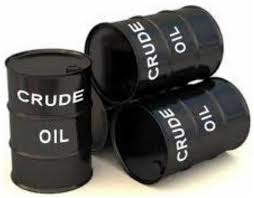Crude prices edged down in early Asian trading on Monday as a weak demand outlook means oversupply will likely remain in place for months and as speculators cut their bets on rising prices.
Front-month US crude futures were trading at $44.58 per barrel early on Monday, 2 cents below their last close and 12.5% lower than their October peak. Internationally traded Brent was 4 cents lower at $47.95 a barrel, almost 11.5% below its monthly high.
Specifically, prices of Nigeria’s crude oil grades have recorded significant decline over the last two weeks, fuelling concerns over the ability of the country to meet its revenue target and fund its budget. Latest data released by Platts, a global energy information service, revealed that Nigeria’s crude oil grades had, over the last two weeks, dropped between 60 cents and 40 cents, the lowest in two months.
According to their statistical report, Nigeria’s flagship crude oil grade, Qua Iboe, was assessed at a premium to Dated Brent of $0.65 per barrel, the lowest since July 13, adding that the levels have dropped 60 cents from highs at the start of October, when the grade was assessed at Dated Brent plus $1.25 per barrel.
Brent oil, the benchmark crude, is currently trading at about $47.99 per barrel. In addition, the report stated that premium Nigerian grades, Bonny Light and Forcados have also dropped 50 cents since the beginning of October, while Bonny Light was assessed at Dated Brent plus $0.60 per barrel and Forcados also at Dated Brent plus $0.60 per barrel, the lowest since mid-August.
The report quoted oil traders as saying that the brief parity of all three grades at the end of last week had since disappeared, with Qua Iboe retaining a small premium over the other two. Differentials for Bonga grade had also dropped 50 cents since the beginning of October to Dated Brent plus $0.50 per barrel, while Escravos had dipped 40 cents to Dated Brent flat. Other Nigerian grades assessed by the report, Brass River, Erha, Usan, Agbami and Akpo, also had narrowing differentials.
Reasons for drop
The report attributed the drop in price to a number of factors including pressure from high freight rates, dampened European demand due to low refinery margins and competing Mediterranean grades. “As forward margins are on the way down and freight is holding at strong levels, European buyers are sitting on their hands,” one crude trader said.
Trading sources also stated that West African crude could begin to price into Europe this week, but falling differentials for competing light, sweet Mediterranean grades such as CPC and Azeri have made it more difficult. “The Mediterranean fall makes it even worse for residual light WAF,” said one trader of West African crude. The report said: “Additionally, in Europe, Urals discounts have grown to their widest in more than 16 months as a prolonged period of stagnant arbitrage and an overly long sour crude market in Europe made it increasingly difficult to clear volumes.
“As a result, a number of European refineries are switching refining slates to heavier, sourer grades. India, which normally takes numerous monthly Nigerian cargoes, has also finished its buying for November, with the ongoing issue over the required ‘letter of comfort’ for ships loading from Nigeria still deterring some Indian buyers from loading additional crude. “Despite some talk in the market about the US Gulf Coast and East Coast being potential buyers, traders in Europe said stronger buying interest has yet to be seen from the US. “However, as differentials continue to sink and compete favourably with domestic light sweet crudes, the US becomes a more likely region for remaining November barrels.”
By Olisemeka Obeche (with agency reports)
[divider]


